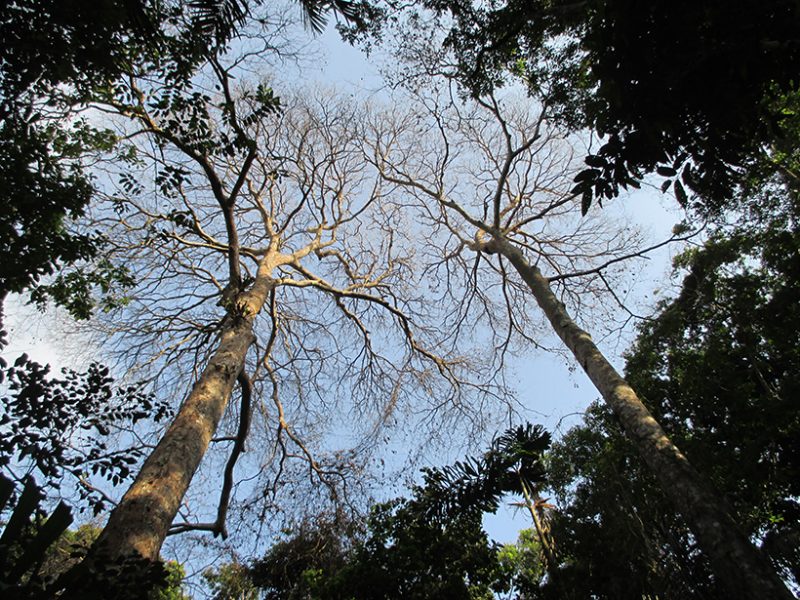Now, Yanoviak and his colleagues have shown that lightning strikes on Barro Colorado Island in the Panama Canal disproportionately hit the tallest trees. Lightning sends electrical current spreading among tree crowns, affecting as many as 32 trees at once. The researchers also found that lightning was responsible for most deaths of the tallest tropical trees, some believed to be up to 500 years old.
This top-heavy tree mortality has likely had a significant effect on the island’s forest ecosystem, said S. Joseph Wright, an ecologist at the Smithsonian Tropical Research Institute in Panama who was not involved in the research. “These forest giants, with trunk diameters larger than 60 centimeters and heights taller than 35 meters, are responsible for most of the seeds produced by their species populations each year,” he noted. “Their deaths by lightning have disproportionate effects on population and community dynamics.”
Lightning affects ecosystems in many ways, direct and indirect. In addition to electrocuting trees, lightning strikes ignite tens of thousands of wildland fires per year globally. Lightning also changes Earth’s atmospheric chemistry and can alter the composition of rocks. “It’s a unique and concentrated disturbance,” said Evan Gora, an ecologist at the University of Louisville and a member of Yanoviak’s team.
